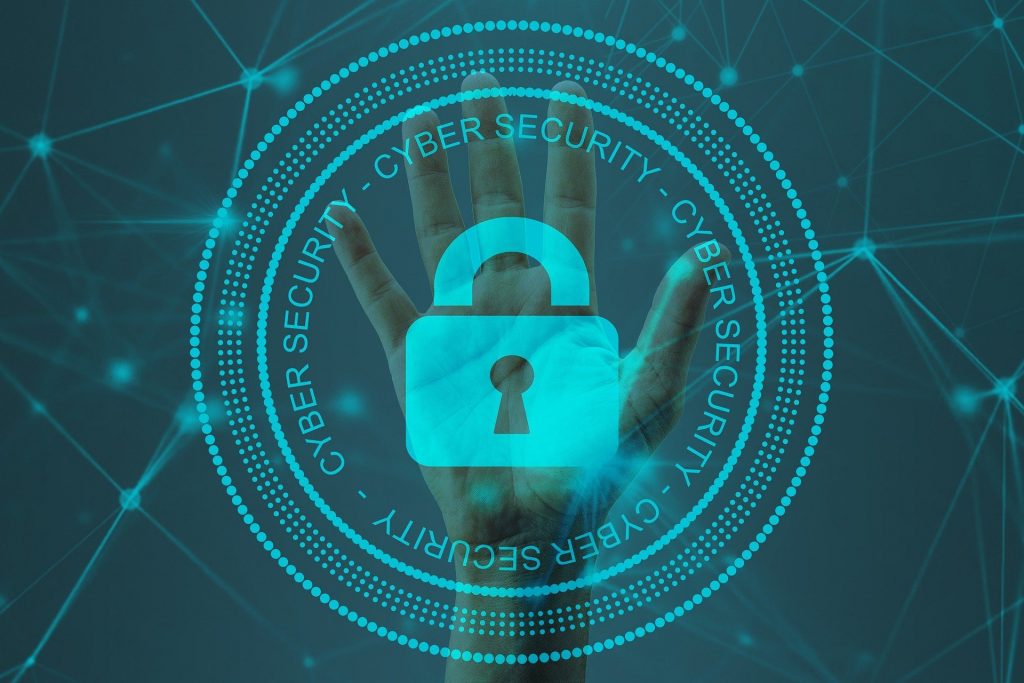Learn About Cybersecurity Awareness Month 2021 With PGH Networks
Cybersecurity Awareness Month 2021
October is Cybersecurity Month in the United States.
Cybersecurity Month was first designated in 2004 as an awareness campaign launched to collaborate between the U.S. Department of Homeland Security and the National Cyber Security Alliance (NCSA) — a public-private partnership that included many top companies and executives in the tech world. Today, NCSA collaborates with the Cybersecurity and Infrastructure Security Agency (CISA), created in 2018 to modernize America’s response to cyber threats.
Now in its 18th year, Cybersecurity Month has organized four weeks of themed content under the overarching message of “Do Your Part. #BeCyberSmart.”
Cyber Security Month is an excellent opportunity for IT departments, data security leaders, and staff members to share best practices with their workforces. The NCSA website offers a wealth of resources to help foster collaboration between your organization’s data security, internal communications, and social media teams. These include social media posts, calendars, tips, content ideas, and more.
Are you interested in taking your organization’s participation to the next level?
Check out CISA’s dedicated Cybersecurity Awareness Month page to learn how to get involved. You can sign up to be a part of the Cybersecurity Awareness Month Champion program to have your organization’s name appear on the champions page and receive a toolkit with graphics, logos, branding guidelines, presentation slides, video conferencing backgrounds, and more.
PGH Networks Commitment to Change this Cybersecurity Awareness Month

PGH Networks is getting involved in this year’s Cybersecurity Awareness Month by signing up as a 2021 Champion and joining a growing global effort to promote online safety and privacy awareness. The Cybersecurity Awareness Month Champions Program is a collaborative effort among businesses, government agencies, colleges and universities, associations, nonprofit organizations, and individuals committed to the Cybersecurity Awareness Month theme of ‘Do Your Part. #BeCyberSmart.
More than ever before, technology plays a part in almost everything we do. Connected devices are an essential part of society and how people communicate and access services necessary to their well-being. Despite these significant advances in technology and the conveniences this provides, recent events have shown us how quickly our lives and businesses can be disrupted when cybercriminals and adversaries use technology to harm. Cybersecurity Awareness Month aims to shed light on these security vulnerabilities while offering actionable guidance surrounding behaviors anyone can take to protect themselves and their organizations. Everyone has a responsibility to do their part in securing our interconnected world.
This year, the Cybersecurity Awareness Month’s weekly focus areas will revolve around:
- Understanding and implementing basic cyber hygiene, including the importance of solid passphrases, using multi-factor authentication, performing software updates, and backing up data.
- Recognizing and reporting phishing attempts, whether it’s through email, text messages, or chat boxes.
- Empowering individuals to not only practice safe online behavior but consider joining the mission of securing our online world by considering a career in cybersecurity!
- Make cybersecurity a priority in business by creating products and processes “secure by design” and consider cybersecurity when purchasing new internet-connected devices.
If everyone does their part – implementing more robust security practices, raising community awareness, educating vulnerable audiences, or training employees – our interconnected world will be safer and more resilient for everyone.
Now in its 18th year, Cybersecurity Awareness Month continues to build momentum and impact with the ultimate goal of providing everyone with the information they need to stay safer and more secure online. PGH Networks is proud to support this far-reaching online safety awareness and education initiative co-led by the National Cyber Security Alliance and the Cybersecurity and Infrastructure Agency (CISA) of the U.S. Department of Homeland Security.
What is Cybersecurity and Why Do We Need It?

As our digital and physical lives become more intertwined than ever, it becomes vital that each of us remains diligent to virtual threats to our finances, social media, workplace portals, and other online accounts. By understanding which systems cybercriminals exploit, you are better able to defend yourself from attack.
On its website, CISA defined the term ‘cybersecurity as the act of protecting ‘networks, devices, and data from bad actors. Of course, this includes our computer devices and smartphones. But as the ‘internet of things’ (IoT) continues to grow, we increasingly have to be diligent about smart speakers, refrigerators, appliances, watches and wristbands, gaming devices, and all sorts of other gadgets that would not have come to mind even a decade ago.
As access to everything from our financial institutions to medical health records become digital, the convenience of having all of our data literally at our fingertips is offset by the dangers of hacking. The results can be devastating if an online criminal gets through our defenses to install malicious code, gain access to our accounts, or attack vulnerabilities in software or hardware systems. According to Cisco Systems, over half of cyber-attacks resulted in $500,000 or more in damages.
As more and more of our work and social lives are conducted online, you don’t have to be a data security officer of a major firm to be proactive in your Cybersecurity Measures. In order to work from home, many of us have had to juggle additional accounts and logins, essentially weaving our private and business accounts into a one-stop-shop for the online bad guys. By auditing our accounts and passwords and being diligent in our backup and authentication practices, we can ensure both sides of that work-life balance are safe and in sync.
Cybersecurity For Beginners
Are you still unsure how cybersecurity works and how it might affect your personal life or organization?
A recent article, Business Cyber Security Basics & Foundations, can be a helpful guide on your journey to learn more about this topic. Here, cybersecurity expert Jeramy Kopacko organizes core concepts into three main areas of concern: Basic Controls, Foundational Controls, and Organizational Controls.
With this construct, you’ll be able to organize your threat map into digestible buckets that have concrete paths to victory. For example, auditing software and hardware assets and managing administrative privileges fall under Basic Controls. Foundational Controls include things like email, malware, and data recovery defenses, and data protection efforts. Finally, Organizational Controls are forward-facing and have proactive behaviors like internal awareness efforts, readiness drills, and response measures.
Check out the post for more details.
Cybersecurity News

Cybersecurity is — quite literally — a constantly evolving field. It’s a game of cat and mouse between cyber guardians and bad actors trying to gain access to sensitive digital data.
This shifting battlefield means even the savviest of data protectors must be ignorant of the newest threats. Take this recent example: an Email Attack from NOBELIUM that Microsoft discovered. Here, a shadowy organization called NOBELIUM honed a strategy to evade Microsoft defenses over a period of less than a year. In that time, they were able to ramp up their capabilities to the point that they attacked over 3,000 individuals in a single day in May 2021.
Luckily, most of the attacks were thwarted. But this is an excellent example of the lengths increasingly sophisticated syndicates will take to probe an organization’s defenses to gain access to people’s information.
Recently, we’ve seen cybercriminals enthusiastically embrace disasters to further their ends.
Whether it’s a pandemic-affected tax season, which saw a 200-plus percent increase in attacks in 2020 or using the work-from-home dynamic to go after soft targets removed from their IT departments, it’s crucial to stay one step ahead to protect your personal and private life.
How to Prevent Cybersecurity Attacks
Whether you are a data security officer, a member of the C-suite leadership, or an employee looking to protect your organization’s online resources, there are many ways you can stay one step ahead. Because today’s sophisticated attacks can affect the entire organization — from accounting to operations — preventing cyberattacks should be top-of-mind for all hands.
A significant first step is an internal communications effort to educate your employees. Please work with your team to ensure workers have the resources they need to fend off digital bad guys. Use all of the tools available to your communications team, including email, newsletters, and internal web portals, to get the word out.
Next, make sure your equipment is up to date. Start with an audit of your hardware and software assets, and make sure patches and updates are completed in a streamlined manner.
Don’t forget employees who use their own devices to access company servers. Whether front-line retail staff checking inventory or a workforce-only mobile portal, these programs and the devices used to gain access should be considered within the scope of the audit.
Whatever users are accessing the device and software solutions, proper password management is a must. When possible, two-factor authentication is preferred. This method requires users to receive a code via text or email -— thwarting criminals’ attempts to alter passwords through the backend.
Finally, make sure you work with IT experts who can manage your Network Security. Our friendly and knowledgeable team at PGH Networks will help improve your bottom line with our industry-leading strategic and layered approach to network security.

